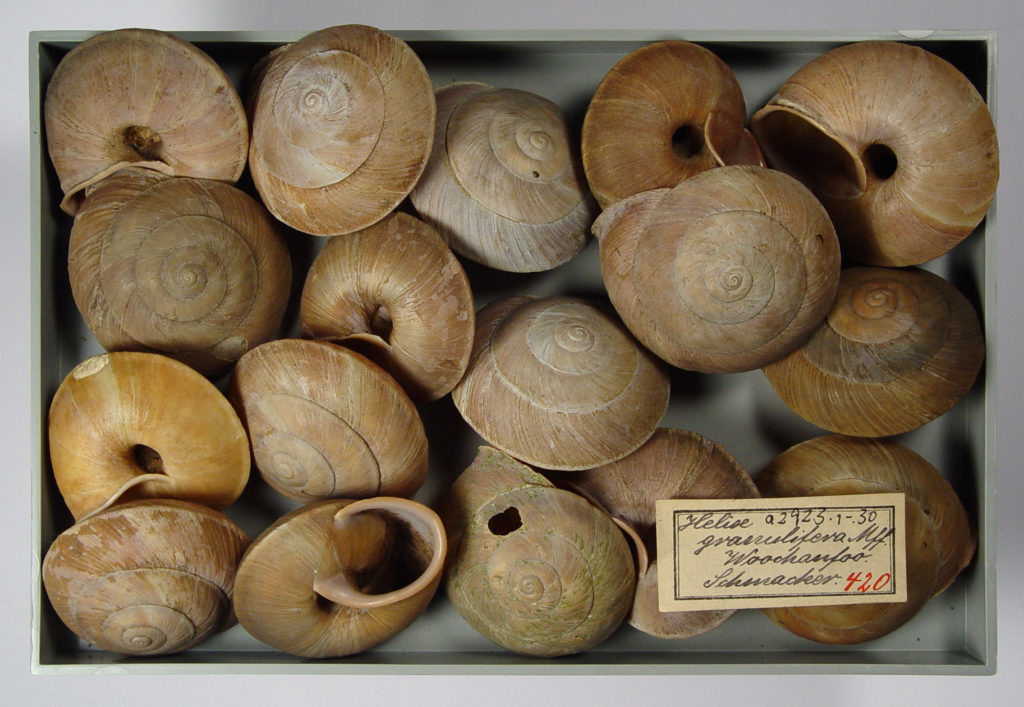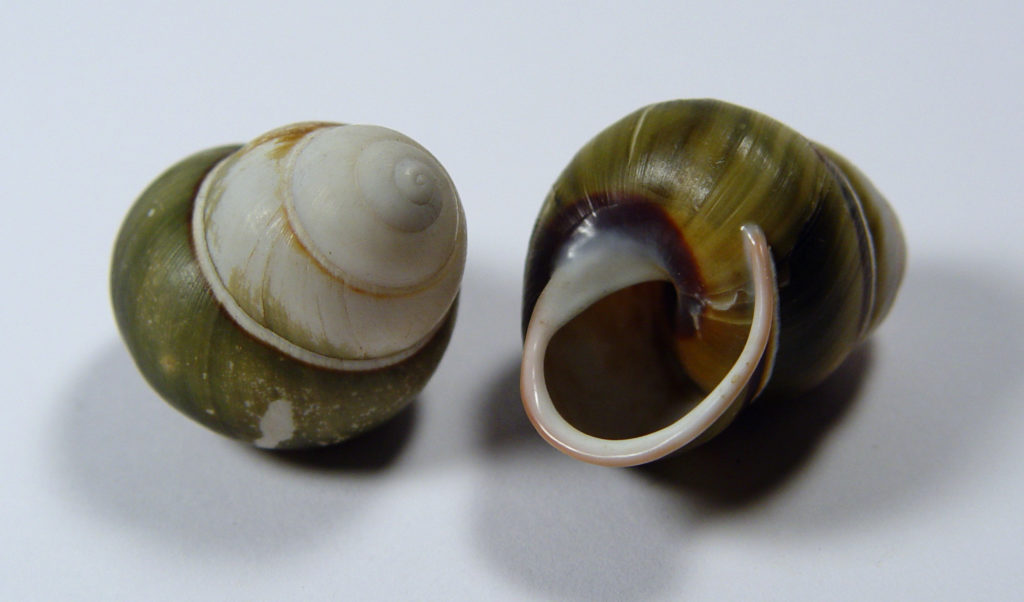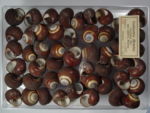Land snails
Pulmonates or land snails belong to the most successful groups of animals on the continent, globally more than 20000 species exist. This enormous success is even more astonishing, since snails exclusively lived in the sea originally and envaded the continents later in their phylogeny. Many adaptions were necesassary for this evolutionary step, compared to the habitat in the sea in particular water balance and respiration are fundamentally different on the continent, however, also sense organs and reproduction have to change.
These adaptions occurred several times, in different groups of snails and at different times. Furthermore, this development took the straight path from the sea to the mainland, but also the roundabout way of first settling in fresh water lakes and rivers and later on land. Therefore pulmonates can not be attributed to a single ancestor (monophyletic), but moreover to several groups of snails (polyphyletic).

Philipp Bernhard Schmacker was a merchant from Bremen, but he lived between 1872 to his death in 1896 in China. In China as well as in other parts of eastern Asia he collected molluscs. His collection is preserved until today and is one of the most important collections of land snails in Germany and beyond.
Land snails from China
The collection of Philipp Bernhard Schmacker comprises of more than 73000 specimens and 4000 different data files, this constitutes that it is the most comprehensive field in the Geosciences Collection related to a single person. The portion of specimens from eastern Asia is especially high because of Schmacker’s main whereabouts. Focussing on China only there is material of more than 860 different species respectively localities present, corresponding to several thousand specimens.

Schmacker’s material originates additionally to that of the eastern Asian realm from all over the world. The localities are located in countries starting with Afghanistan, Albania and Egypt and ending up with Vietnam and Yugoslawia. 80 % of the 73000 single specimens of the Schmacker collection are land snails, only a few are marine-living animals.
References
- Kuster-Wendenburg, E. (1999): Der Bremer Stein und die Dinosaurier. Die Geschichte einer Sammlung. – 95; Aschenbeck & Holstein, Bremen.
- Schmacker, P. B. & Böttger, O. 1894: Descriptions of some Chinese land-shells. – Procedings of the malacological Society of London 1: 169-174.




